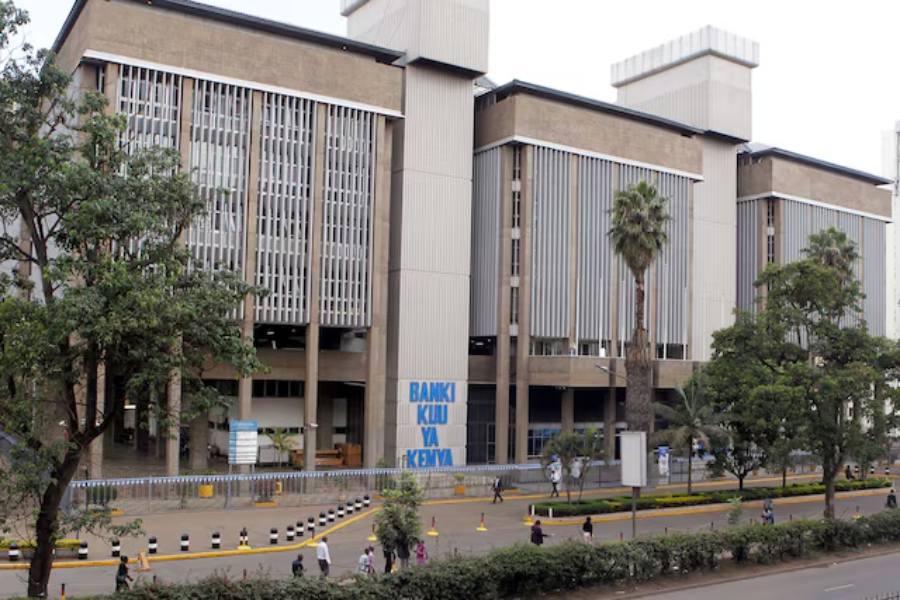Kenya’s Central Bank has once again reduced its benchmark lending rate, marking the sixth consecutive cut, but this time with a smaller margin. The Central Bank Rate (CBR) now stands at 9.75%, a 25-basis-point reduction from the previous rate of 10%. This more cautious move follows a larger 75-basis-point cut in the previous meeting, signaling a more measured approach to supporting the country’s economy.
The decision was made by the Central Bank’s Monetary Policy Committee (MPC), which explained that the rate cut was part of ongoing efforts to stimulate lending by banks to the private sector and to support broader economic activity. The committee noted that this move would further augment previous actions aimed at bolstering the economy.
Economists had mixed expectations for the rate decision. A Reuters poll showed a split among analysts, with three forecasting a rate cut, three expecting no change, and one predicting a rate hike. The minor cut indicates that the Central Bank is being cautious, balancing the need to support growth while monitoring other economic challenges.
Kenya’s economic outlook has also seen a downward revision. The Central Bank has reduced its growth forecast for 2025 to 5.2% from a previous estimate of 5.4%, mainly due to the impact of higher trade tariffs. Despite this revision, the Central Bank remains cautiously optimistic, particularly regarding the current account deficit. The deficit is now expected to be 1.5% of GDP for the year, an improvement from the 2.8% projected in April.
These revisions come amid ongoing challenges in Kenya’s public finances. The country is facing high debt repayments and underperformance in revenue, which have placed a significant strain on the economy. To address these fiscal pressures, the Kenyan government has applied for a new lending program from the International Monetary Fund (IMF), following the abandonment of a previous review in March due to unmet requirements. The hope is that external support will help stabilize the country’s finances.
Inflation has also been a key concern for the Central Bank, but the latest forecast suggests that it will remain within the target range of 2.5% to 7.5%. The Central Bank expects inflation to remain on the lower end of this range in the near term, providing some relief to consumers who have been dealing with rising costs for food and fuel. The bank’s monetary policy has played a crucial role in maintaining price stability, which is vital for protecting consumers’ purchasing power.
Kenya’s public debt remains a significant concern. A significant portion of the government’s budget is allocated to servicing this debt, leaving less room for investment in vital sectors such as infrastructure, healthcare, and education. The country is heavily reliant on external borrowing, and with global economic conditions fluctuating, the government faces a tough challenge in managing its fiscal obligations. The new IMF lending program aims to provide Kenya with some financial relief, but questions remain about how long the country can continue to depend on external financing.
The Central Bank’s decision to reduce interest rates is part of a broader strategy aimed at stimulating economic activity. By lowering borrowing costs, the bank aims to encourage banks to lend more to businesses, potentially leading to increased investment, higher demand for goods and services, and overall economic growth. This policy aims to help counteract the economic slowdown, particularly in key sectors like agriculture, manufacturing, and construction, which are vital to Kenya’s long-term economic stability.
While the rate cut may not immediately solve Kenya’s economic challenges, it demonstrates the Central Bank’s commitment to supporting the private sector and encouraging growth. The government’s efforts to address the country’s fiscal challenges will be just as important as the Central Bank’s actions in determining the trajectory of Kenya’s recovery.
Despite the economic difficulties, Kenya’s Central Bank remains cautiously optimistic. By reducing interest rates, the bank is aiming to create a more favorable lending environment, which could help spur growth in the private sector and provide a much-needed boost to the economy. However, the country faces significant challenges ahead, including managing its public debt and improving revenue collection.
Kenya’s road to economic recovery will require careful balancing of fiscal discipline and monetary policy. While the Central Bank’s rate cuts provide some hope, the country’s long-term success will depend on implementing necessary reforms, managing debt effectively, and finding ways to reduce dependence on external financial support. The government’s approach, combined with the Central Bank’s ongoing efforts to support the private sector, may lay the groundwork for more sustainable economic growth in the years ahead. However, with the global economic environment still uncertain, Kenya’s future remains fragile, and its ability to weather the storm will depend on a combination of internal reforms and external assistance.


